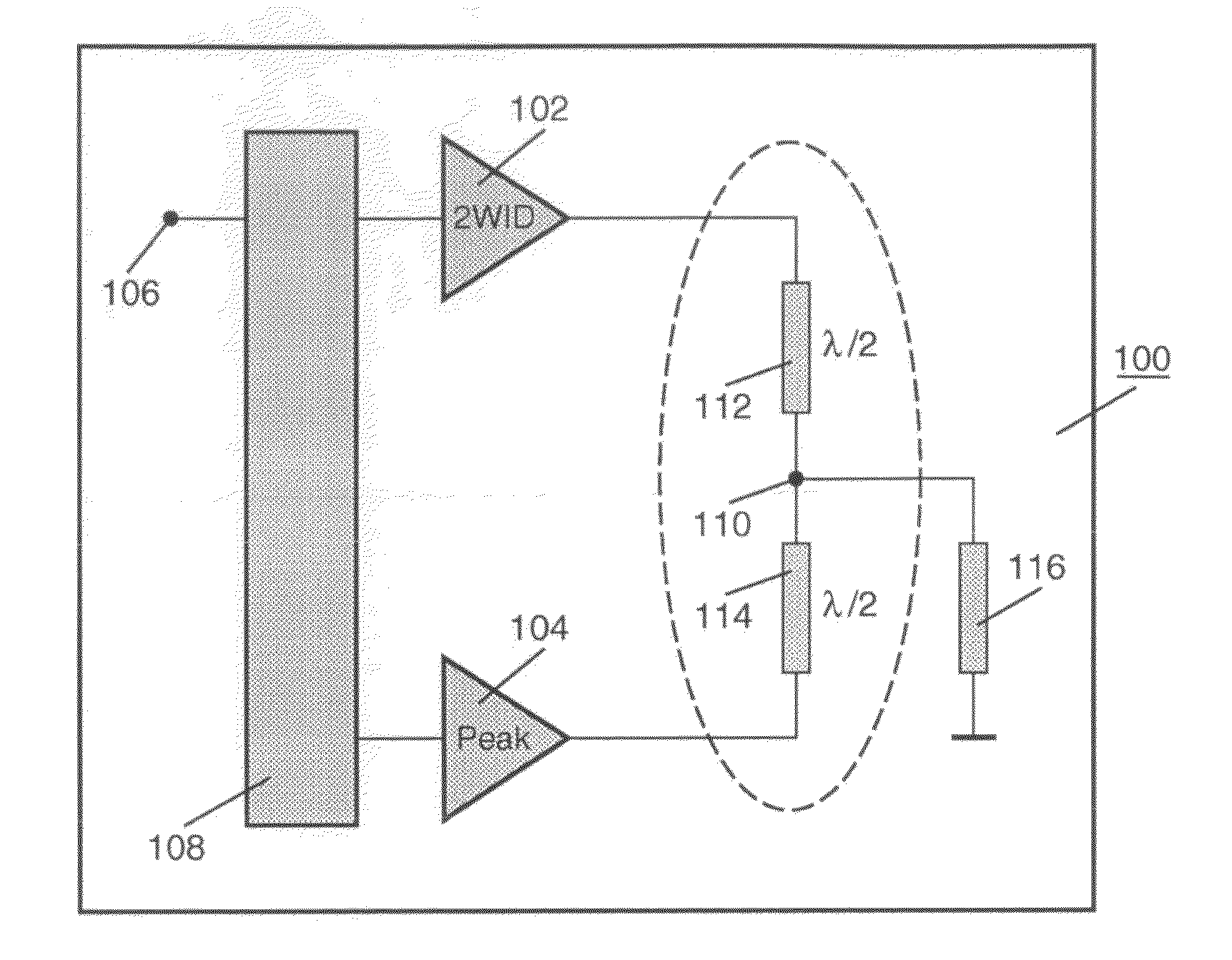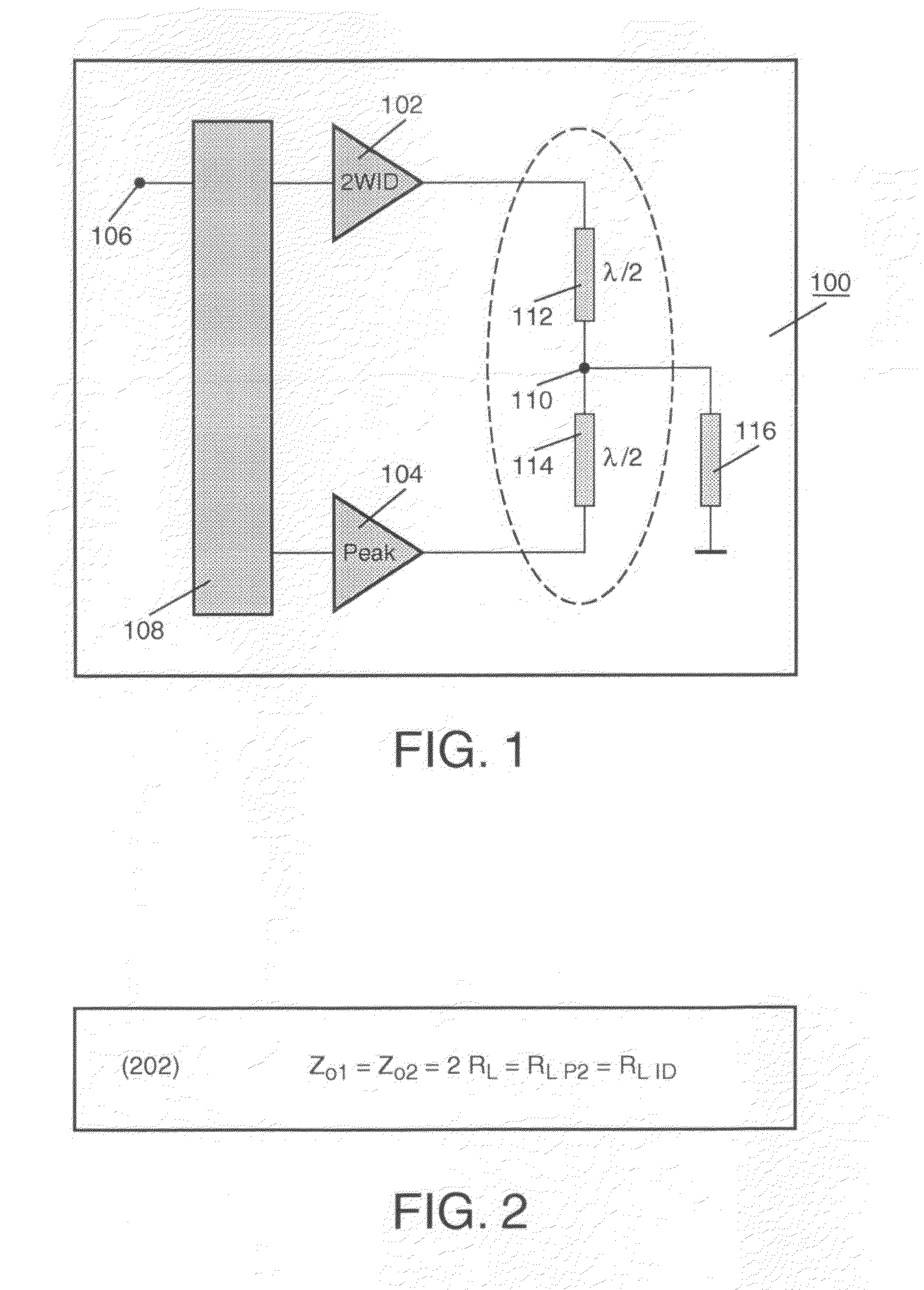Multi-way doherty amplifier
a doherty amplifier and multi-way technology, applied in the direction of amplifiers, amplifier modifications to reduce detrimental impedence, electrical equipment, etc., can solve the problems of difficult control of the quality or performance of such amplifiers in mass production, amplifiers are not used on a large scale, time-consuming tasks, etc., to improve the design and performance of a 3-way doherty amplifier, and reduce the overall size of the 3-way doherty design. , the effect of improving
- Summary
- Abstract
- Description
- Claims
- Application Information
AI Technical Summary
Benefits of technology
Problems solved by technology
Method used
Image
Examples
Embodiment Construction
[0013]FIG. 1 is a diagram of an electronic circuit 100 with a multi-way Doherty amplifier that comprises a two-way Doherty amplifier 102, having a main stage and a first peak stage and integrated in a semiconductor device, and at least one further peak stage 104 implemented with a discrete power transistor. Inputs of amplifier 102 and of further peak stage 104 are connected to an input node 106 via an input network 108. Input network 108 comprises, for example, a hybrid coupler between input node 106 and the inputs of amplifiers 102 and 104. Alternatively, input network comprises a λ / 4 line of specific impedance between the inputs of amplifiers 102 and 104 so as to implement a 90° phase shift. An output of integrated two-way Doherty amplifier 102 is connected to an output node 110 via a first λ / 2 line 112. An output of further peak stage 104 is connected to output node 110 via a second λ / 2 line 114. Output node 110 is connected to a load resistance 116. Lines 112 and 114 form an out...
PUM
 Login to View More
Login to View More Abstract
Description
Claims
Application Information
 Login to View More
Login to View More - R&D
- Intellectual Property
- Life Sciences
- Materials
- Tech Scout
- Unparalleled Data Quality
- Higher Quality Content
- 60% Fewer Hallucinations
Browse by: Latest US Patents, China's latest patents, Technical Efficacy Thesaurus, Application Domain, Technology Topic, Popular Technical Reports.
© 2025 PatSnap. All rights reserved.Legal|Privacy policy|Modern Slavery Act Transparency Statement|Sitemap|About US| Contact US: help@patsnap.com


